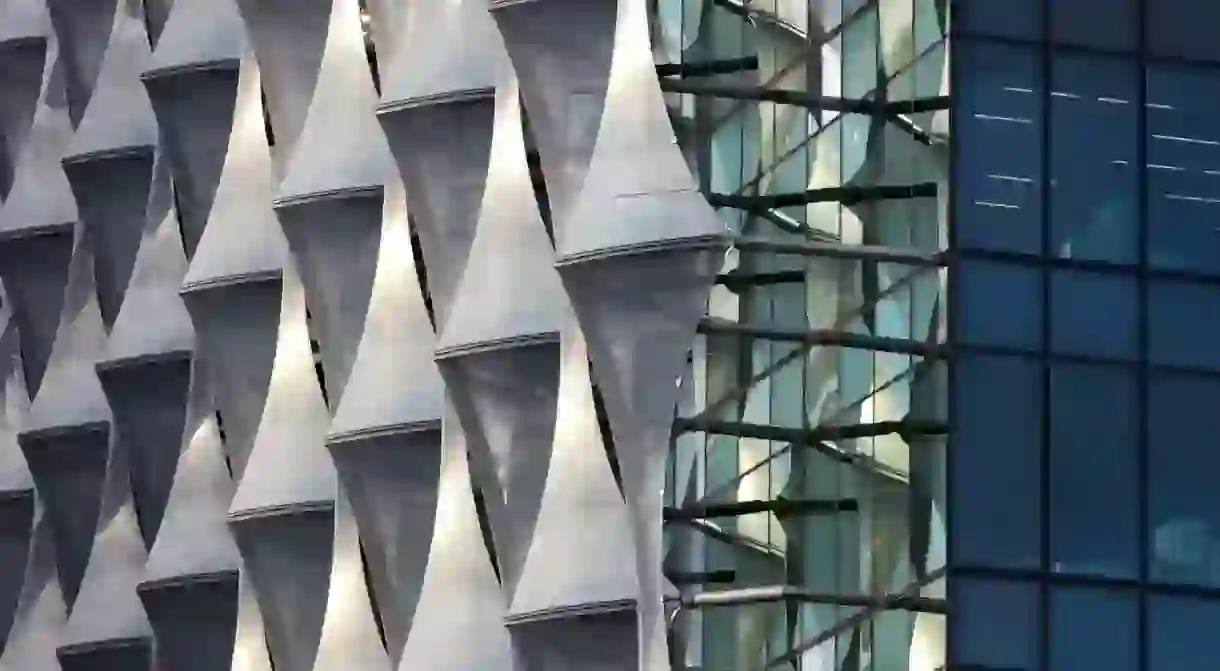Security and Sustainability Rule in London's New US Embassy

The most expensive embassy building in the world, the US Embassy, has just been completed in Nine Elms by Philadelphia-based architects Kieran Timberlake. The challenge was to create a building that would promote values of ‘transparency, openness and equality’ while also scrupulously adhering to impenetrable security measures and high standards of sustainability.
The cutting-edge building cost an eye-watering £750 million (although, according to diplomats it has been funded from the sale of London properties), and was commissioned during Barack Obama’s presidency. Kieran Timberlake architects was chosen for its commitment to sustainability, with its aim being to ‘map a passage toward a diplomacy for the environment’.

Moving from its cramped former residential neighbourhood in Mayfair, which was a 1960s Eero Saarinen-designed building, the new US Embassy is set in the heart of the Nine Elms district, which is currently under intense redevelopment. The US Embassy will be the trend-setter for a new diplomatic quarter, with the Dutch Embassy due to follow suit, and there are rumours that the Chinese Embassy has also considered another site nearby.

The new location offers a heightened level of security that could never have been achieved at its former London site, yet Kieran Timberlake has attempted to discuss these practical requirements with innovative and aesthetic solutions. The moat-like pond becomes a tranquil water feature, surrounded by public gardens, while anti-truck barriers are concealed by hedges.

Partner at Kieran Timberlake James Timberlake said: ‘It meets and exceeds all the security requirements. We are using elements of landscaping that have been around for centuries and centuries. But it’s not a fortress. We are able to use the landscape as a security device. There’s no wall and no fences.’
The 48,128-square-metre embassy is just as sustainable as it is security-tight; the building will be practically self-sufficient in energy production and, according to officials, could even operate off-grid ‘for an extended period’.

Sustainable initiatives include a ground-source heat pump that uses warmth from the earth, combined heat and power units, demand-controlled ventilation and even the ornamental pond is part of the site’s stormwater strategy, which aims to provide a water source for the gardens and to reduce the strain on the capital’s sewer system.
In addition, the 12-storey ‘crystalline cube’ has been covered in transparent ‘sails’ that prevent the building from overheating while also letting in plenty of natural light; the transparent plastic is the same that’s used for the bio-domes in the UK’s Eden Project, while solar panels have also been fitted to the exterior. As well as being practical and energy-efficient, the design also aims to reflect the American government’s ideals of ‘transparency and openness’.

‘Our challenge for the embassy was to encompass these values, creating a strong sense of welcome for the community, while also meeting specific functional requirements for security, diplomatic work, and environmental sustainability,’ says Kieran Timberlake.

The embassy is almost twice the size of the former location, with an estimated 1,000 visitors on a daily basis and 800 staff to cater for. Employees benefit from extensive internal gardens that represent archetypal American landscapes, such as the Canyonlands Garden, inspired by the desert landscapes of the Grand Canyon, and a lush Pacific Forest Garden. A number of artworks have also been commissioned for the embassy, including a sculpture commissioned by British artist Rachel Whiteread in the lobby.

The US Embassy project is set to pave the way for further urbanisation of the Nine Elms location, including a new pedestrian greenway that will extend from Vauxhall Station to Battersea. The building is set to officially open in January 2018, which is when the first staff are due to move into the new site.













